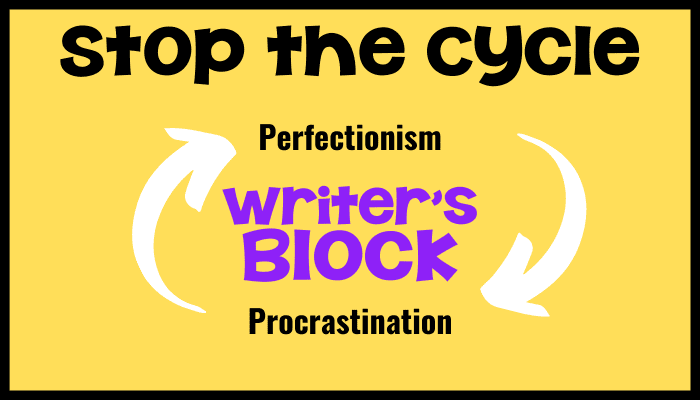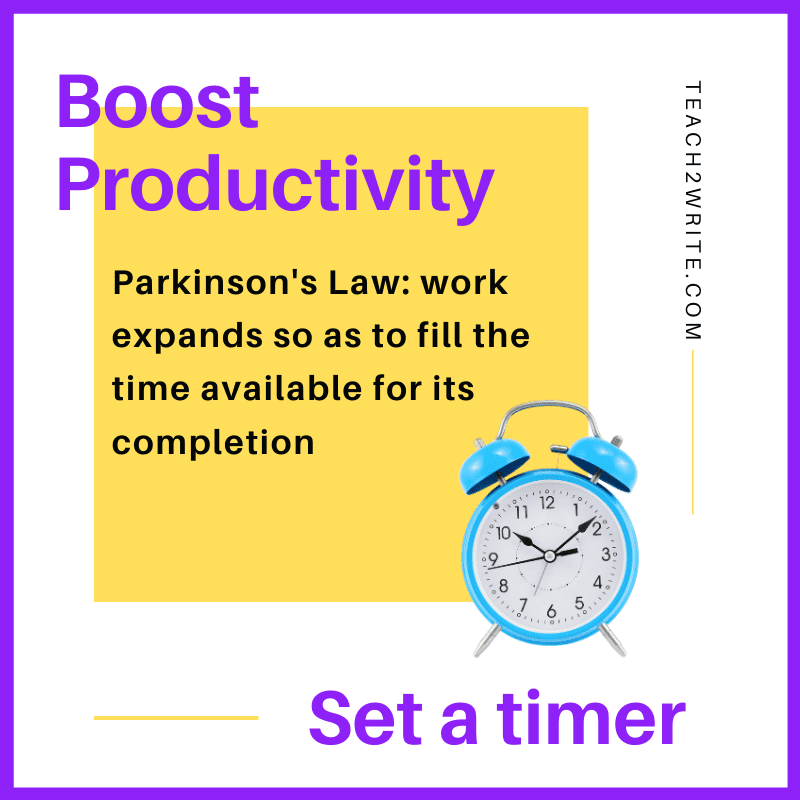Stop the Cycle of Perfectionism and Procrastination! Writing is one of the most difficult, and yet most important subjects to teach. Now, I realize reading is equally important. Yet, I have found that teaching students to express themselves through writing often gets them to read MORE.
As an ELA teacher over the last 25 years, I’ve used a writer’s workshop approach to hook students into my English Language Arts course. I call my students, “writers” from the very first day of school. Just to clarify, we do read in our writer’s workshop, using “mentor texts”; however, the focus on this blog post is going to be writing.
Why do students get stuck?
ALL writers suffer from writer’s block.
This is especially true for our students, since they have to write on demand every day, for every subject (except sometimes in math and maybe electives).
First, we need to understand the psychology behind this mental dilemma. Why do we get writer’s block? It comes down to the perfectionism/procrastination cycle.
Two Ways Students Get Stuck in the Perfectionism/Procrastination Cycle
Writing is hard work. It takes a lot of time and thinking. Some writers will do everything else – research, watch videos about writing, make notes and drawings, check their social media. They will do everything else, except actually write. Because writers work so hard at trying to make sure they have everything just right, they forget to JUST WRITE. This evasion turns into procrastination.
Other times writers rewrite the beginning over and over again because it isn’t perfect. One time I spent weeks rewriting an introduction to a story for a course I took in college. Due to this rewriting, I never actually finished that story and had to turn in something else. This loop of rewriting is another form of procrastination.
Perfectionism Creates a Fixed Mindset
Perfectionism creates a fixed mindset because it doesn’t allow for mistakes or growth. Students are afraid their writing sounds “bad” or doesn’t live up to expectations – either their own or yours. This causes them to get stuck in a fixed mindset. Therefore, you need to teach writers to recognize this cycle and teach them a few tricks to get out of it.
How I break the Perfectionism/Procrastination Cycle in My Classroom:
1. Teach 5 Tricks that Break Writer’s Block
I teach students 5 tricks (or strategies) for breaking writer’s block in the first few weeks of school. Using my own writer’s notebook, I model how to do each trick. I often use my cell phone to videotape this and speed up the recording. During my live lessons, I narrate over the recording. It’s important that students see you writing, and that you talk about your decisions and struggles with writing.
2. Assign these tricks with every writing assignment.
I assign these “tricks” every time we do a writing assignment. For example, if students are going to read something, they complete a writing sprint about the topic before the lesson. Another time, students might create a list of details for their own personal narrative.
3. Conference with students about using the writer’s tricks.
As I confer with my students, we discuss what tricks work best for them and how they have morphed them to fit their own needs. For example, Ava used a mindmap of lists for characters in a story she wrote. So, she wrote characters in the center of her page. Then each subtopic was a character. Underneath each character’s name, she created a list of physical and personality traits. She also included a quick sketch next to each character. So, she used 3 of the 5 tricks into one brainstorming session and on one page of her writer’s notebook.
4. Use writer’s notebooks (journals).
Even though my students use a computer lab for their assignments, all planning and notes go into their writer’s notebook. Students use them during mini-lessons, sharing, using the writer’s tricks and during writing. I have converted some of my paper-pencil activities to digital notebook activities here for distance learning.
How you can Stop the Cycle of Perfectionism/Procrastination in your classroom:
Keep a writer’s journal along with your students. Use your journal for planning mini-lessons, creating examples for students and honing your own writer’s craft. The more you use your writer’s journal, the easier it will become for you to help your students vanquish writer’s block.
Here are FREE resources you can use to teach my 5 BEST STRATEGIES for stopping the cycle: 5 Tricks that Break Writer’s Block
Do you need a little “magic” to help your middle school writers?
Students often do not come to your writing classroom with all the strategies they need to get started with writing. Sometimes they are confused or don’t know what to say. These 5 writer’s tricks are proven strategies I’ve used for years in the classroom, and now I want to share those with you. Contained in this resource you’ll find:
- fun, engaging worksheets
- teacher tips for implementing these 5 tricks
- how-to videos that demonstrate how I teach these 5 tricks
- easy-to-use rubric



